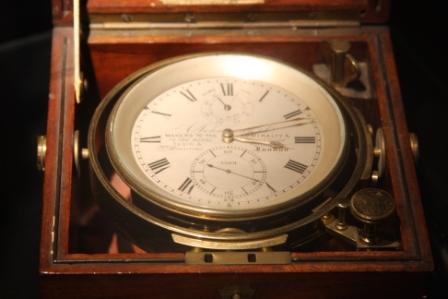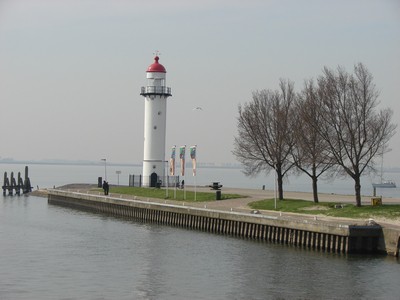Not too long ago chronometers were the only instrument used on board ships for accurate timekeeping for purpose of navigational calculation. Some older ships used to carry two chronometers as a safeguard against mechanical failure or accident. but even chronometers have not escaped the advancement of science and the older version of winding chronometers are being replaced by quartz chronometer which is powered by small flashlight batteries. With the advent of satellite navigators, GPS and integrated navigation systems very accurate GMT can be obtained from any of them and hence on modern ships the chronometer tends to take a backseat. However at least one chronometer is carried on board ships and they are required to be maintained.
Here we will discuss both the older traditional type and the modern electronic type of chronometer.
In brief
- The chronometer represent a fine example of precision engineering manufactured and tested under stringent quality control methods to comply with marine
- The mechanical movement of the timepiece in manufactured as near to perfection as is humanly possible.
- It is used for the purpose of navigation and is generally the only clock on board that displays GMT (Greenwich Mean Time). Of course, modern navigational equipment like the GPS also display accurate GMT
Traditional Chronometer
- This Is simply an accurate clock which is compensated for changes in temperature and set in gimbals so that its working will not be disturbed by the motion of the ship.
- They are normally carried as close to the center of motion of the ship as possible and insulated against dampness and padded to reduce shocks.
- The clock mechanism is usually enclosed in a bowl and a spring-loaded dust cover set in the base of the bowl allows access for winding.
- Some of the chronometers need to be wound daily, some once in a 3 day period and some once in a 7 day period.
- The winding key, known as the ‘Tipsy-Key’ is inserted into the base of the instrument after inverting the bowl in the gimbals and sliding back the dust cover.
- They are manufactured so that they cannot be overwound, the majority being fully wound after 7 ½ – half turns of the key anti-clockwise.
- When fully wound the person winding the chronometer will encounter a butt stop which will prevent further winding.
- Some chronometers are fitted with a small indicating dial on the clock face which provides an indication that the instrument is fully wound.
- If the chronometer stops due to oversight or other reason, the hands of the clocks can be reset as follows:
- Unscrew the glass faceplate of the chronometer, fit the ‘Tipsy key’ over the center spindle, holding the hands and carefully turn the key to move the hands in the normal clockwise direction.
Do not turn the clock hands anti-clockwise as this will place excessive strain on the mechanism and cause serious damage.
Quartz Chronometer
- This Is a recent development in the marine industry.
- It is basically like any other quartz clock, though highly accurate, powered usually by a flashlight battery.
- Compared to the traditional chronometer, it is highly accurate, less expensive and easy to maintain.
- It does not need winding as the battery provides power for the clock to run for at least one year.
- They do not require gimbals, can be mounted on a bulkhead and are resistant to shock and vibration.
- Their average daily rate should not exceed 0.2 seconds.
- They have a key at the back of the clock to adjust the hands and the only maintenance they require is changing the battery once a year.
- The clock keeps accurate time and when the battery becomes weak the clock stops.
Checking error and rating a chronometer
- To obtain the error of a chronometer, it is checked daily against radio time signals and the error noted.
- The chronometer should be rated on a daily basis against reliable time signals. Any error either fast or slow should be recorded in the chronometer error book, small errors being taken into account for navigational calculations.
- The amount of gain or loss each day is known as the Daily rate.
- The daily rate of the chronometer is the number of seconds gained or lost in one day. It is usually measured over a number of days to overcome operational errors.
- A good reliable chronometer may not keep perfect time but will have a constant daily rate so that GMT can be computed when required.
Other Clocks
The clocks on board the ship except the chronometer keeps ship’s time and not GMT. On most older ships these clocks had to be set individually and manually when the ship is moving from one time zone to the other. The Second Officer on board the ship has the responsibility of ensuring that all clocks on board the ship especially in the public places are showing the right time and are properly wound and maintained.
Most the modern ships are fitted with what is known as the Master-Slave clock system. A typical Master Slave clock is shown in the figure. In this system, all the ships clocks are electric and are connected to one main clock on the bridge. When the Master Clock on the bridge is adjusted – all the Slave Clocks in the accommodation, engine room and other spaces connected to the Master Clock are automatically adjusted. This system is excellent as it reduces the need for adjusting each and every clock on board the ship. It also ensures that all clocks on board the ship keep the same time.




